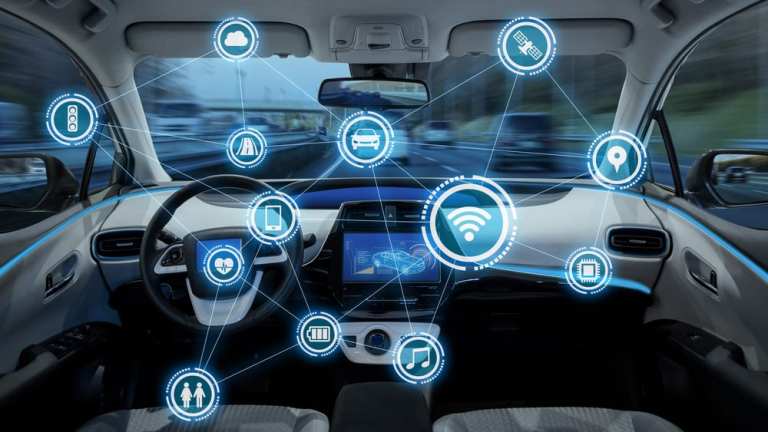
More than a century of automotive culture has brought many exiting eras. Think about how the affordable Ford Model T opened up car ownership to the masses, or the macho fun of the muscle car era, or even the more mundane joy of the fuel-efficiency revolution over the last generation or so.
Another exciting time is playing out now before our eyes: the rise of the connected vehicle ecosystem, and the race to get market share for various software and platforms vital to this area of payments and commerce. Not only are all the major automotive manufacturers deeply involved, but so are such players as Amazon and Google. In a new PYMNTS interview, Dan Gittleman, CEO at automotive software supplier Xevo, and Brian Woods, the company’s CMO, spoke with Karen Webster about what’s to come as this ecosystem develops.
“When consumers get into the car, there is only one experience,” Gittleman said, referring to how software and platforms will work in the ideal connected vehicle experience — a seamless process that combines such functions as payments, commerce and navigation.
Indications on what’s to come are easy to find via recent developments in the connected vehicle space.
New Moves
One of the latest examples of that comes from General Motors (GM), which plans to add Google apps capability to its cars in 2021, according to a report. Buick, Chevrolet, GMC and Cadillac vehicles will have in-car voice, navigation and other Google-enabled capabilities.
In 2017, GM began shipping vehicles with the Android Automotive operating system (OS), starting with integration in the Cadillac CTS, then expanding to other cars. It is based on the OS that runs on phones and tablets, but was modified to work with cars. The services will be embedded into the car’s operating system, so drivers can access the same features they use on their phones from their vehicles. Santiago Chamorro, GM’s vice president for global connected customer experience, said the car company decided on the move after doing some customer research.
Xevo’s role in the growing ecosystem is to provide a platform that enables drivers to conduct commerce, access loyalty offers and discounts, and make gas and other payments from prompts seen on their vehicles’ dash displays. More than 25 million vehicles use Xevo software. As Gittleman told it, if a driver wanted to place a to-go order for pancakes from the car, or pay for gasoline, that driver would do all that via the Xevo software, even if they were using Amazon Alexa as a voice assistant for those commerce activities.
That, of course, raises a significant question. As Webster asked, wouldn’t Amazon want to control such transactions itself, including the payment method (which offers revenue opportunity)? “It doesn’t have to work that way is the best I can say about that,” Gittleman said. As he described, it’s up to original equipment manufacturers (OEMs) to negotiate the best deals they can with Amazon, Google and others with technology that will play a big role in connected vehicles.
“We own the commerce for in-car domains,” he said. “It goes through us. It’s up to the OEM, and their skills of negotiation, on what they can do.”
That’s a delicate balance, perhaps, and the stakes are high. As PYMNTS research has shown, 135 million U.S. commuters spend $212 billion annually as they drive to and from their workplaces and homes — 40 percent of these commuters spend over $18.7 billion getting their daily caffeine fix, while 54 percent order ahead and pay for food, influencing $47.3 billion in commerce every year.
Chicken And Egg
Even so, there is a bit of a chicken-and-egg problem with the emerging connected vehicle ecosystem, Woods said. “We are trying to grow [merchant participation] while growing an addressable audience,” he told Webster. “It’s not an easy thing.”
However, the near-term future certainly holds great promise for the connected vehicle ecosystem. For one, cars and trucks coming out today are made with that ecosystem in mind.
“Over the next few years, the bulk of cars out there will [have all] this,” Woods said. When autonomous vehicles start to take the road (that’s more distant), that means the problem of distracted drivers will — theoretically, at least — recede in the rearview mirror. “When you get away from distracted drivers, you can offer a richer, broader experience [for commerce],” he said.
The two Xevo executives also talked about shorter-term progress. Think of this: a combination of what Gittleman called a “killer” insurance app and top user experience to broaden the commerce and payments potential of the connected vehicle ecosystem. That is just one potential example of the things to come — sooner, probably, rather than later — when it comes to connected vehicles.